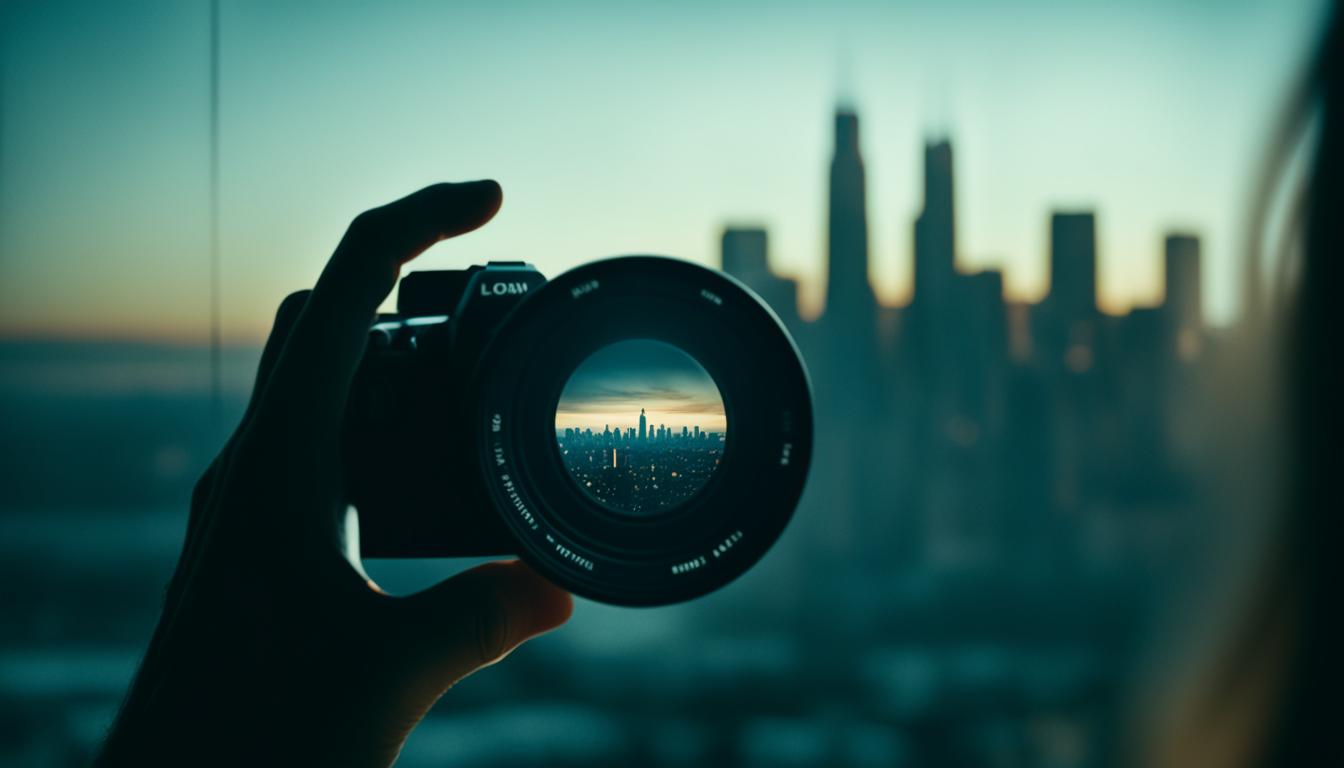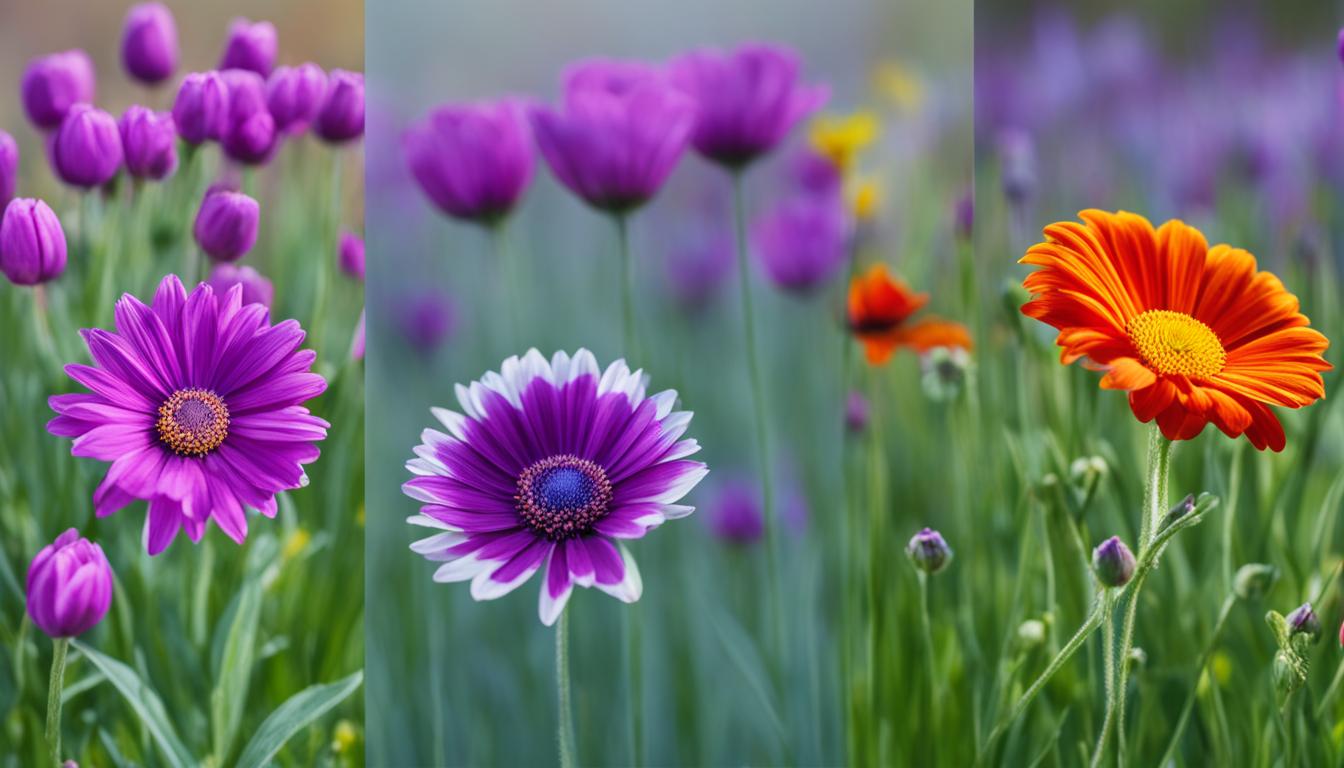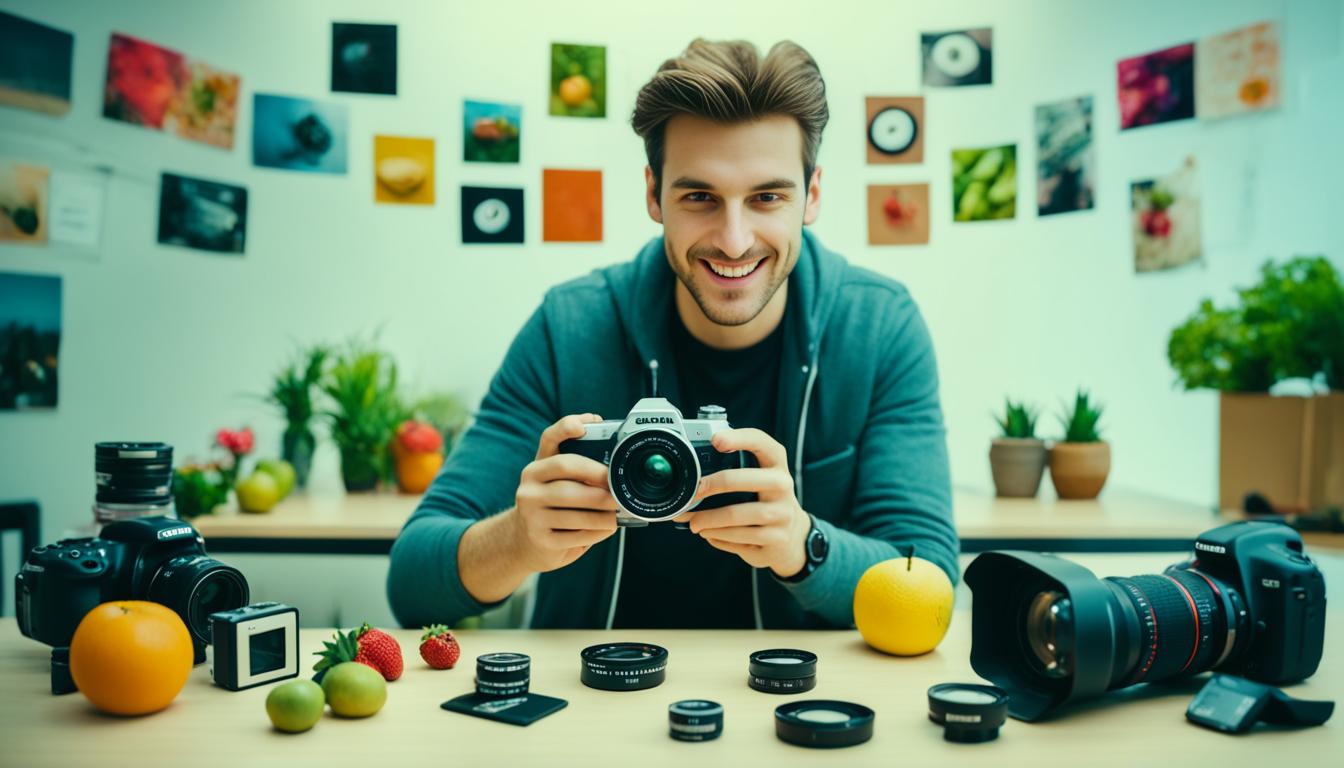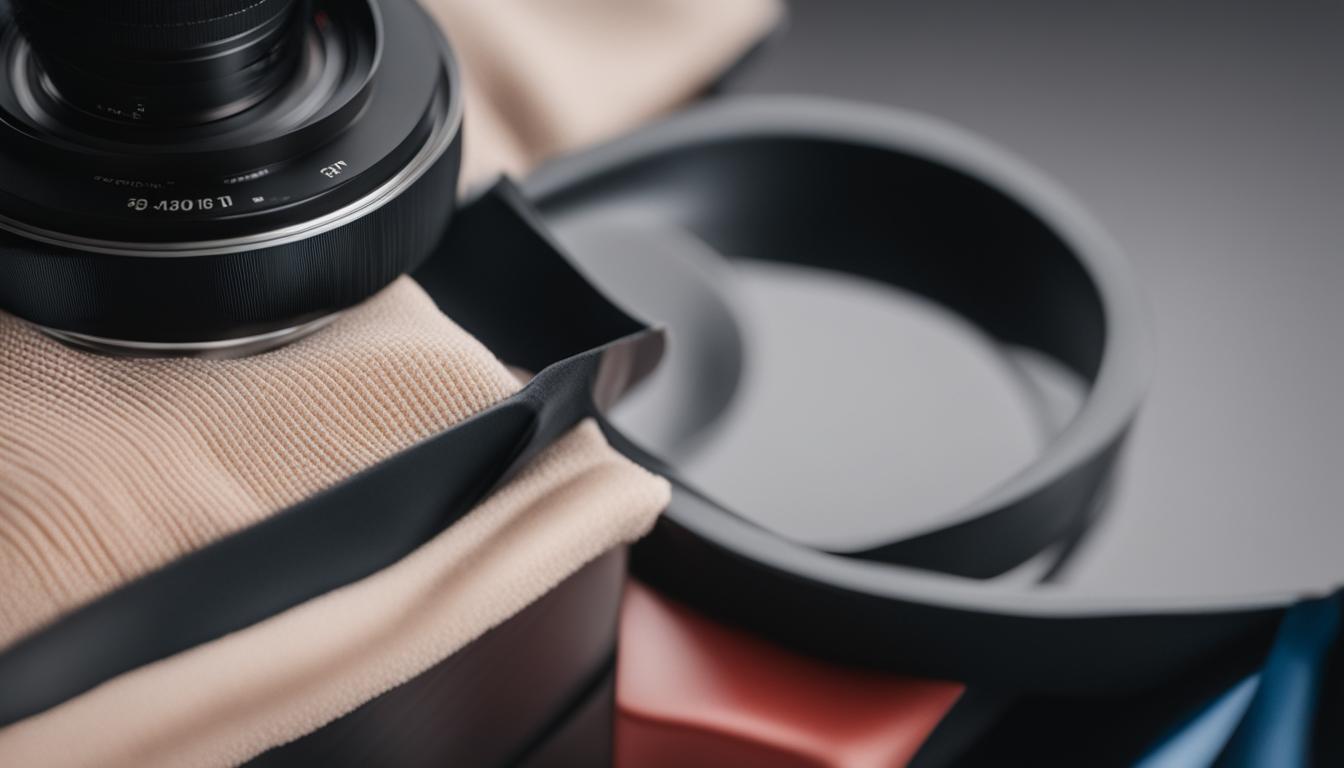Shooting in low light conditions can be a daunting task for photographers. However, with the right techniques and skills, you can capture stunning photos even in dimly lit environments. In this article, we will explore the fundamentals of shooting in low light and provide you with essential tips and techniques to improve your low light photography skills.
When it comes to shooting in low light settings, understanding the basics is crucial. By mastering low light camera techniques, you can confidently capture photos in dim light and produce impressive results. From adjusting your camera settings to utilizing lighting effects, we will guide you through the essentials of shooting in low light.
Throughout this comprehensive low light photography guide, we will dive into the intricacies of low light shooting skills and explore different approaches to capturing images in challenging lighting conditions. Whether you are a beginner or an experienced photographer, these tips and techniques will help you overcome the obstacles of low light photography and create remarkable images.
Key Takeaways:
- Mastering low light photography is essential for capturing stunning images in dimly lit environments.
- Understanding the basics of shooting in low light conditions is crucial for improving your skills.
- Adjusting camera settings, utilizing lighting effects, and optimizing your technique are key factors in successfully shooting in low light.
- By applying essential tips and techniques, you can overcome the challenges of low light photography and produce impressive results.
- Continuously practice and experiment with different approaches to refine your low light photography skills.
Understanding Low-Light Photography
Low-light photography is the art of capturing images in situations where the available light is not sufficient for optimal exposure. It requires specific techniques and an understanding of different types of low light. Let’s explore some of these types:
Twilight
Twilight refers to the period of the day that includes dawn and dusk. During this time, the natural light is soft and diffused, creating a beautiful and serene atmosphere for photography.
Blue Hour
The blue hour is a particular phase of twilight when the sky takes on a predominantly blue hue. It occurs before sunrise and after sunset, providing a unique lighting opportunity with a magical blue ambiance.
Nighttime
Once the sun has set, the world is illuminated by artificial and natural sources of light. Nighttime photography allows you to capture stunning images with a different mood and atmosphere.
Indoor Low Light
Indoor spaces with minimal natural light present their own challenges for photographers. By understanding how to work with artificial lighting and maximizing the available light, you can create compelling images in these situations.
Shadowed Areas
Even in bright daylight, certain areas may be shadowed, resulting in low-light conditions. These areas offer opportunities for dramatic lighting effects and creative compositions.
Weather Conditions
Weather conditions such as overcast days or heavy fog can create unique low-light scenarios. These conditions require adjustments to exposure settings and can result in atmospheric and moody photographs.
Understanding these different types of low light will help you adapt your photography techniques to produce stunning images in challenging lighting conditions. Let’s explore further steps in our journey to master low-light photography.
| Type of Low Light | Challenges | Opportunities |
|---|---|---|
| Twilight | Low light levels, changing colors | Serene atmosphere, soft lighting |
| Blue Hour | Narrow time window, mixed light sources | Magical blue ambiance, unique color tones |
| Nighttime | Noise, limited available light | Dramatic lighting, capturing cityscapes |
| Indoor Low Light | Limited natural light, white balance challenges | Opportunity for creative lighting, unique indoor scenes |
| Shadowed Areas | High contrast, uneven lighting | Play of light and shadows, dynamic compositions |
| Weather Conditions | Dim light, unpredictable weather | Moody and atmospheric shots, unique textures |
Leveraging Manual Mode for Low-Light Photography
When it comes to capturing stunning images in low-light conditions, manual mode is a valuable tool that gives us complete control over our camera settings. By understanding the exposure triangle, which consists of ISO, aperture, and shutter speed, we can optimize our low light photography settings for the best results.
The exposure triangle is the foundation of manual mode in low-light photography. It consists of three key elements:
- ISO: This setting controls the sensitivity of the camera’s sensor to light. In low-light situations, increasing the ISO can help capture more light and result in brighter photos. However, keep in mind that higher ISO values can introduce noise or grain to the image.
- Aperture: The aperture setting determines the size of the lens opening. Choosing a wide aperture, represented by a lower f-stop number, allows more light to enter the camera, enabling better exposure in low-light conditions. It also helps create a shallow depth of field, emphasizing the subject against a blurred background.
- Shutter Speed: Shutter speed controls the amount of time the camera’s sensor is exposed to light. In low-light situations, using a slower shutter speed allows more light to be captured, resulting in brighter images. However, longer shutter speeds increase the risk of camera shake and motion blur, so it’s crucial to stabilize the camera using a tripod or other stabilization techniques.
By manually adjusting these settings, we can achieve beautifully lit images in low-light conditions. Experimenting with different combinations of ISO, aperture, and shutter speed allows us to fine-tune our exposures and unleash our creativity.
Remember, finding the ideal balance between these settings depends on the specific lighting conditions and the creative vision you wish to achieve. Don’t be afraid to experiment and adjust your settings to capture the perfect shot.
Manual mode gives us the power to control our camera settings, allowing us to adapt to any lighting situation and capture stunning low-light photographs.
Tips for Manual Mode in Low-Light Photography
When shooting in manual mode for low-light photography, keep the following tips in mind:
- Start with a low ISO setting to minimize noise in your images. Gradually increase the ISO if needed.
- Use a wide aperture to allow more light into the camera. This can also create a beautiful shallow depth of field.
- Be mindful of your shutter speed. While longer exposures can capture more light, they may introduce blur due to camera shake. Use a tripod or other stabilization techniques to keep your images sharp.
- Consider shooting in RAW format for greater flexibility in post-processing, especially when dealing with underexposed images.
- Experiment with external lights, such as portable LED panels or off-camera flashes, to supplement the available light and enhance your low-light photography.
By understanding the exposure triangle and applying these tips, you can leverage manual mode to its fullest potential and capture stunning low-light photographs.
Essential Low-Light Photography Tips and Techniques
When it comes to low-light photography, having the right tips and techniques in your arsenal can make a world of difference. We’ve compiled a list of essential strategies to help you capture stunning images in low-light conditions.
“Shooting with a low ISO helps reduce image noise.”
When shooting in low light, it’s important to consider the ISO setting on your camera. Keeping the ISO low can minimize noise and produce cleaner images. Experiment with different ISO values to find the right balance between noise reduction and exposure.
“Using a wide aperture allows more light to enter the camera.”
Opening up your aperture (using a lower f-stop number) increases the amount of light that enters the camera, resulting in brighter images. This technique is particularly effective in low-light situations, as it allows your camera to gather as much light as possible.
“Reducing shutter speed can capture more light, but it’s important to stabilize the camera to avoid motion blur.”
Lowering your shutter speed allows your camera to capture more light, but it also increases the likelihood of motion blur. To combat this, focus on stabilization techniques such as using a tripod or taking advantage of your camera’s built-in image stabilization feature.
“Shooting in RAW format provides more flexibility in post-processing.”
RAW format preserves more image data, giving you greater flexibility when editing your photos in post-processing. This is especially helpful when dealing with underexposed images, as you can recover more details without sacrificing quality.
“Using external lights can enhance the lighting in low-light situations.”
If you’re shooting in an environment with limited natural light, consider using external lights to supplement the available light. This can help illuminate your subject and improve the overall lighting conditions, resulting in better-exposed photos.
“A fast lens with a wide maximum aperture is ideal for low-light photography.”
Investing in a fast lens with a wide maximum aperture (e.g., f/1.8 or lower) allows more light to reach your camera’s sensor, making it easier to capture well-exposed images in low-light conditions. This type of lens is particularly useful in situations where you can’t control the available light.
“Post-processing can help enhance underexposed images.”
Even with the best techniques, it’s not uncommon to end up with underexposed images in low-light photography. Luckily, post-processing software such as Adobe Lightroom can help you recover details, adjust exposure, and fine-tune your images to achieve the desired results.

With these essential tips and techniques, you’ll be well on your way to capturing stunning photos in low-light conditions. Remember to experiment, practice, and continue to refine your skills to achieve impressive results.
Advanced Techniques for Mastering Low-Light Photography
Now that you’ve mastered the basics of low-light photography, it’s time to take your skills to the next level with advanced techniques. These techniques will allow you to push the boundaries of what you can achieve in challenging lighting conditions. Let’s explore some of these techniques:
Autofocus in Low Light
Autofocus can be tricky in low-light situations, as the camera may struggle to lock onto the subject. To overcome this, consider using techniques such as:
- Using a flashlight to provide temporary illumination for the autofocus system to work effectively.
- Switching to manual focus mode and using the camera’s focus peaking feature or magnification to ensure precise focus.
Chasing Available Light
In low-light photography, being able to find and utilize available light sources creatively can make a significant difference in the quality of your images. Some tips for chasing available light include:
- Exploring different angles and positions to capture the best lighting effects.
- Experimenting with the interplay between natural and artificial light sources to create visually stunning compositions.
Using Grain Creatively
Grain, or digital noise, is often considered undesirable in photography. However, when used creatively, grain can add a unique aesthetic to your low-light photographs. Here are a few ways to use grain creatively:
- Embrace the grain by purposely increasing the ISO to a higher level, creating a gritty and textured look.
- In post-processing, enhance grain or add film-like grain effects to evoke a nostalgic or vintage vibe.
By incorporating these advanced techniques into your low-light photography, you can elevate your images and capture stunning moments in even the most challenging lighting conditions.
Creative Approaches to Low-Light Photography
Low-light photography provides a canvas for creativity. In addition to mastering the technical aspects of shooting in low light, you can also experiment with various techniques to create unique and captivating images. Here are two creative approaches that can take your low-light photography to the next level:
Using Light Trails
One popular technique in low-light photography is capturing light trails. This involves using longer exposures to capture the movement of light sources, such as vehicle tail lights or city lights. By selecting a slower shutter speed and steadying your camera on a tripod or solid surface, you can create stunning images where the light trails create dynamic and mesmerizing patterns. This technique works best in areas with significant movement, such as busy roads or urban environments.

Light Painting Photography
Another creative approach to low-light photography is light painting. Light painting involves using a handheld light source, such as a flashlight or LED stick, to paint or draw in the frame during a long exposure. This technique allows you to add unique and artistic effects to your images. By moving the light source creatively, you can create shapes, patterns, and even write words in the air, resulting in visually stunning and imaginative photographs.
When practicing light painting, it’s important to work in a dark environment to control the amount of light in the frame. Experiment with various light painting tools and techniques to unleash your creativity and bring your low-light images to life.
By incorporating light trails and light painting into your low-light photography, you can add an extra dimension of creativity to your images. These techniques allow you to explore and express your artistic vision while capturing the beauty of low-light environments.
The Best Cameras for Low-Light Photography
The choice of camera plays a significant role in low-light photography. To capture stunning images in low-light conditions, it’s important to choose a camera that is well-suited for such settings. Consider the following factors when selecting a camera specifically for low-light photography:
- Sensor size: A larger sensor can capture more light, resulting in better image quality and reduced noise in low-light situations.
- ISO performance: Look for a camera with excellent ISO performance, as higher ISO settings are often necessary in low-light conditions to maintain proper exposure.
- Low-light autofocus capabilities: Ensure that the camera has reliable autofocus performance in low-light environments, allowing you to capture sharp and well-focused images.
- Lens selection: Invest in high-quality lenses with wide maximum apertures, as they allow more light to enter the camera and offer greater flexibility in low-light photography.
Researching and selecting a camera that meets your specific needs and budget is essential for achieving exceptional results in low-light photography. Whether you’re a professional photographer or an enthusiast, having the right camera gear can significantly enhance your ability to capture breathtaking images in challenging lighting conditions.
Recommended Cameras for Low-Light Photography
| Camera | Sensor Size | ISO Range | Autofocus System | Lens Compatibility |
|---|---|---|---|---|
| Sony Alpha a7S III | Full-frame | ISO 80-102400 (expandable to 40-409600) | Fast and accurate AF system | Sony E-mount |
| Nikon D850 | Full-frame | ISO 64-25600 (expandable to 32-102400) | Advanced Multi-CAM 20K autofocus system | Nikon F-mount |
| Canon EOS R6 | Full-frame | ISO 100-102400 (expandable to 50-204800) | Dual Pixel CMOS AF II system | Canon RF-mount |
| Fujifilm X-T4 | APS-C | ISO 160-12800 (expandable to 80-51200) | Fast and accurate autofocus system | Fujifilm X-mount |
Note: This table showcases some recommended cameras for low-light photography, but there are many other options available on the market. It’s important to research and compare different models to find the camera that best suits your requirements.
Remember that the camera is just one piece of the puzzle. Mastering the techniques and utilizing the tips mentioned in the previous sections of this article are equally important for achieving outstanding low-light photographs.
Conclusion
Shooting in low-light conditions may present its challenges, but with the right techniques and equipment, you can capture stunning photos that truly stand out. By mastering the basics of low-light photography, such as understanding the exposure triangle and leveraging manual mode, you can enhance your skills in shooting in low light. Remember to implement essential tips and techniques, such as shooting with a low ISO, using a wide aperture, and stabilizing your camera for sharper images.
For those looking to take their low-light photography to the next level, experimenting with advanced techniques and creative approaches can yield impressive results. Explore autofocus options in low light, chase available light sources, and consider using grain creatively to enhance the mood of your photos. Additionally, choosing a camera suitable for low-light conditions can greatly impact the quality of your images. Factors such as sensor size, ISO performance, autofocus capabilities, and lens selection should be considered when making your decision.
Conclusion low-light photography – With practice and dedication, you can refine your low-light photography skills and capture images that are not only technically impressive but also visually captivating. So, grab your camera, embrace the challenge of low-light conditions, and continue to hone your abilities. With time and experience, your low-light photography will reach new heights, allowing you to create stunning and memorable photos.
FAQ
What is low-light photography?
Low-light photography refers to capturing images in situations where the available light is not sufficient for optimal exposure. This includes situations such as twilight, nighttime, indoor low light, shadowed areas, and weather conditions like overcast days or heavy fog.
How can I shoot in low light conditions?
To shoot in low light conditions, you can follow some essential tips and techniques, such as using a wide aperture, increasing ISO sensitivity, keeping your images sharp, and making the most of lighting effects. Understanding the exposure triangle and leveraging manual mode on your camera can also be beneficial.
What camera settings are important for low-light photography?
The three most important camera settings for low-light photography are ISO, aperture, and shutter speed. ISO controls the sensitivity of the camera’s sensor to light, aperture determines the size of the lens opening to control the amount of light entering the camera, and shutter speed determines how long the sensor is exposed to light.
How can I reduce noise in low-light photos?
Shooting with a low ISO can help reduce image noise in low-light photos. Additionally, using external lights and stabilizing the camera with a tripod or camera stabilization features can reduce noise caused by camera shake.
What is the best lens for low-light photography?
A fast lens with a wide maximum aperture, such as a prime lens with a low f-number, is ideal for low-light photography. These lenses allow more light to enter the camera, resulting in brighter and better-exposed images in low-light conditions.
How can I enhance underexposed images taken in low light?
Underexposed images taken in low light can be enhanced through post-processing. Editing software allows you to adjust brightness, contrast, and exposure levels to correct and improve the quality of underexposed images.
What are some advanced techniques for low-light photography?
Some advanced techniques for low-light photography include understanding autofocus in low light, utilizing techniques such as using a flashlight or manual focus, and creatively chasing available light by finding and utilizing natural or artificial light sources.
How can I create unique effects in low-light photography?
You can create unique effects in low-light photography by experimenting with techniques such as capturing light trails from moving subjects or using light painting photography. Light trails can be created by using longer exposures to capture the movement of light sources, while light painting involves using a light source to paint or draw in the frame during a long exposure.
What should I consider when choosing a camera for low-light photography?
When choosing a camera for low-light photography, factors to consider include sensor size, ISO performance, low-light autofocus capabilities, and lens selection. Researching and selecting a camera that meets your specific needs and budget is essential for achieving great results in low-light photography.
How can I improve my low-light photography skills?
To improve your low-light photography skills, it’s important to understand the basics of shooting in low-light conditions, leverage manual mode on your camera, and implement essential tips and techniques such as using a wide aperture and reducing shutter speed. Practicing and experimenting with advanced techniques can also help refine your skills.
How Can I Apply Low Light Photography Tips to my Macro Photography?
When delving into the world of macro photography, mastering macro lighting techniques becomes crucial. Applying low light photography tips to your macro shots can enhance the mood and atmosphere of your images. Experimenting with different light sources and angles can help you capture stunning details and textures in your subjects.




